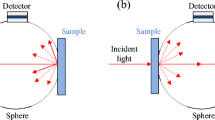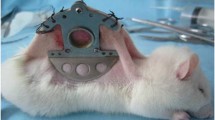Abstract
Laser therapy has been widely used to treat port-wine stain (PWS) and other cutaneous vascular lesions via selective photothermolysis. High incident laser fluence is always prohibited in clinic to prevent the thermal damage in normal skin tissue, leading to insufficient energy deposition on the target blood vessel and incomplete clearance of PWS lesion. In this study, repeated multipulse laser (RMPL) irradiation was proposed to induce acute thermal damage to target blood vessels with low incident fluence (40 J/cm2 for 1064-nm Nd:YAG laser). The feasibility of the method was investigated using animal models. Repeated multipulse irradiation cycles with 10-min intervals were performed in RMPL. A hamster dorsal skin chamber model with a visualization system was constructed to investigate the instant generation of thermal coagulum and relevant hemostasis by thrombus formation during and after irradiation under 1064 nm Nd:YAG single multipulse laser (SMPL) and RMPL irradiation. The diameter of the target blood vessel and the size of thermal coagula were measured before and after laser irradiation. The reflectance spectra of the dorsal skin were measured by a reflectance spectrometer during RMPL. Stasis thermal coagula that clogged the vessel lumen were generated during SMPL irradiation with low incident fluence. However, there was no acute thermal damage of blood vessels. Reflectance spectra measurement showed that the generation of thermal coagula and subsequent thrombus formation increases blood absorption by more than 10% within the first 10 min after laser irradiation. Acute vessel thermal damage could be induced in the target blood vessel by RMPL with low incident fluence of 40 J/cm2. Compared with our previous SMPL study, nearly 30% reduction in incident laser fluence was achieved by RMPL. Low fluence RMPL may be a promising approach to improve the therapeutic outcome for patients with cutaneous vascular lesions by improving energy deposition on the target blood vessel.











Similar content being viewed by others
References
Alper JC, Holmes LB (1983) The incidence and significance of birthmarks in a cohort of 4,641 newborns. Pediatr Dermatol 1(1):58–68
Kelly KM, Choi B, McFarlane S et al (2005) Description and analysis of treatments for port-wine stain birthmarks. Arch Facial Plast Surg 7(5):287–294
Shafirstein G, Buckmiller LM, Waner M, Bäumler W (2007) Mathematical modeling of selective photothermolysis to aid the treatment of vascular malformations and hemangioma with pulsed dye laser. Lasers Med Sci 22:111–118
Li D, Wang GX, He YL, Kelly KM, Wu WJ, Wang YX, Ying ZX (2013) A two-temperature model for selective photothermolysis laser treatment of port wine stains. Appl Therm Eng 59(1–2):41–51
Brightman LA, Geronemus RG, Reddy KK (2015) Laser treatment of port-wine stains. Clin Cosmet Investig Dermatol 8:27–33
McClean K, Hanke CW (1997) The medical necessity for treatment of port-wine stains. Dermatol Surg 23(8):663–667
Bencini PL, Cazzaniga S, Galimberti MG et al (2014) Variables affecting clinical response to treatment of facial port-wine stains by flash lamp-pumped pulsed dye laser: the importance of looking beyond the skin. Lasers Med Sci 29(4):1365–1370
Izikson L, Nelson JS, Anderson RR (2009) Treatment of hypertrophic and resistant port wine stains with a 755 nm laser: a case series of 20 patients. Lasers Surg Med 41(6):427–432
Tierney EP, Hanke CW (2011) Alexandrite laser for the treatment of port wine stains refractory to pulsed dye laser. Dermatol Surg 37(9):1268–1278
Yang MU, Yaroslavsky AN, Farinelli WA, Flotte TJ, Rius-Diaz F, Tsao SS, Anderson RR (2005) Long-pulsed neodymium:yttrium-aluminum-garnet laser treatment for port-wine stains. J Am Acad Dermatol 52:480–490
Jia WC, Choi B, Franco W, Lotfi J, Majaron B, Aguilar G, Nelson JS (2007) Treatment of cutaneous vascular lesions using multiple-intermittent cryogen spurts and two-wavelength laser pulses: numerical and animal studies. Lasers Surg Med 39:494–503
Jia W, Tran N, Sun V et al (2012) Photocoagulation of dermal blood vessels with multiple laser pulses in an in vivo microvascular model. Lasers Surg Med 44(2):144–151
Li D, Li RH, Jia H, Chen B, Wu WJ, Yin ZX (2017) Experimental and numerical investigation on the transient vascular thermal response to multi-pulse Nd:YAG laser. Lasers Surg Med 49:852–865
Li D, Chen B, Wu WJ, Wang GX, He YL, Ying ZX (2014) Experimental investigation on the vascular thermal response to near-infrared laser pulses. Lasers Med Sci 30:135–145
Kimel S, Svaasand LO, Wilson MH, Schell MJ, Milner TE, Neslon JS, Berns MW (1994) Differential vascular response to laser photothermolysis. J Invest Dermatol 103(5):693–700
Kimel S, Svaasand LO, Cao D et al (2002) Vascular response to laser photothermolysis as a function of pulse duration, vessel type, and diameter: implications for port wine stain laser therapy. Lasers Surg Med 30(2):160–169
Kimel S, Svaasand LO, Hammer-Wilson MJ, Nelson JS (2003) Influence of wavelength on response to laser photothermolysis of blood vessels: implications for port wine stain laser therapy. Lasers Surg Med 33(5):288–295
Barton JK, Welch AJ, Izatt JA (1998) Investigating pulsed dye laser-blood vessel interaction with color Doppler optical coherence tomography. Opt Express 3(6):251–256
Barton JK, Frangineas G, Pummer H et al (2001) Cooperative phenomena in two-pulse, two-color laser photocoagulation of cutaneous blood vessels. Photochem Photobiol 73(6):642–650
Babilas P, Shafirstein G, Bäumler W, Baier J, Landthaler M, Szeimies R, Abels C (2005) Selective photothermolysis of blood vessels following flashlamp-pumped pulsed dye laser irradiation: in vivo results and mathematical modelling are in agreement. J Invest Dermatol 20(5):343–352
Furie B, Furie BC (2005) Thrombus formation in vivo. Clin Invest 115(12):3355–3362
Heger M (2013) Thrombosis versus thermal coagulum formation as a result of endovenous laser therapy: biochemistry versus photophysics, Phlebology, 2014. Vol. 29(10):701–705
Heger M, Salles II, Bezemer R, Cloos MA, Mordon SR, Begu S, Deckmyn H, Beek JF (2011) Laser-induced primary and secondary hemostasis dynamics and mechanisms in relation to selective photothermolysis of port wine stains. J Dermatol Sci 63:139–147
Heger M, van Golen RF, Broekgaarden M, van den Bos RR, Neumann HA, van Gulik TM, van Gemert MJ (2014 Mar) Endovascular laser–tissue interactions and biological responses in relation to endovenous laser therapy. Lasers Med Sci 29(2):405–422
Black JF, Barton JK (2004) Chemical and structural changes in blood undergoing laser photocoagulation. Photochem Photobiol 80:89–97
Funding
This study was funded by the National Natural Science Foundation of China (Grant No. 51727811) and China Postdoctoral Science Foundation (Grant No. 2019M653616).
Author information
Authors and Affiliations
Corresponding author
Ethics declarations
Conflict of interest
The authors declare that they have no conflict of interest.
Ethical approval
All procedures involving animal experiments were approved by the Institutional Animal Care and Use Committees of the Xi’an Jiaotong University.
Additional information
Publisher’s note
Springer Nature remains neutral with regard to jurisdictional claims in published maps and institutional affiliations.
Rights and permissions
About this article
Cite this article
Li, D., Wu, W., Chen, B. et al. Thermal coagulum formation and hemostasis during repeated multipulse Nd:YAG laser treatment of cutaneous vascular lesions: animal experiment study. Lasers Med Sci 35, 1589–1597 (2020). https://doi.org/10.1007/s10103-020-03007-0
Received:
Accepted:
Published:
Issue Date:
DOI: https://doi.org/10.1007/s10103-020-03007-0




